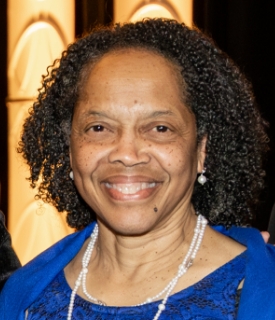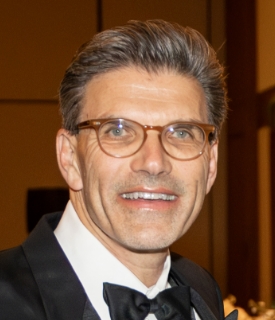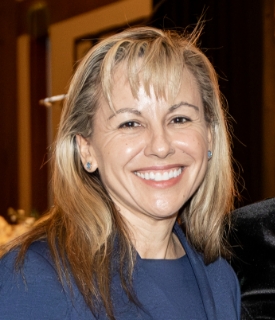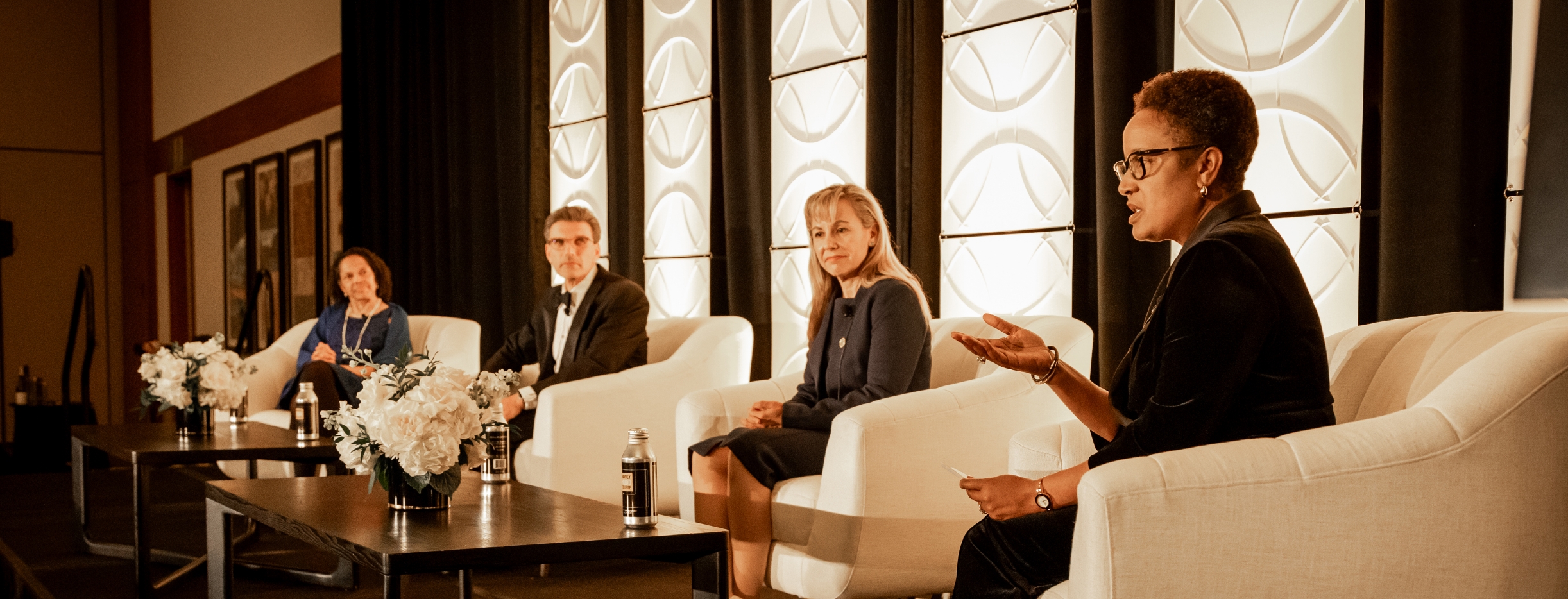Courage, Optimism and the Future
Leaders of private liberal arts institutions discuss the future of higher education
Harriet B. Nembhard’s inauguration as the sixth president of Harvey Mudd College provided an opportunity for higher education leaders to weigh in on the state of science education and the role of higher learning more broadly. At a Feb. 29 dinner, Nembhard posed talking points to a trio of academic peers who were in Claremont to celebrate her investiture: Gilda Barbarino, president of Olin College of Engineering in Needham, Massachusetts; Montserrat Fuentes, president of St. Edwards University in Austin, Texas; and Hiram Chodosh, president of Claremont McKenna College.
Their 40-minute conversation emphasized the importance of nurturing community and making science education malleable enough to meet the needs of students and society in the 21st century.
“One of the cornerstones of my presidency is around building a healthy community,” Nembhard said. “We’ve talked quite a bit about how we have to model that. We want to produce students who are good at STEM and good at life, and that has so many dimensions to it.”
Educating students who understand the impact of their work on society.
GB: In 1997 … the National Science Foundation and others spoke about the need for engineering education to be more hands-on, more project-based, [and for it to] speak more to real-world problems and how to solve them, to look at liberal arts and how it might be integrated with engineering. So, if you really wanted to affect that kind of change … they looked to Harvey Mudd. [At Olin], this cross- pollination with Harvey Mudd—looking to one another for models and sharing—has been going on for quite some time. I can assure you that it’s going to increase with Harriet and me.
MF: We’ve tried to make sure that it is more than just passing knowledge in the classroom; we have a commitment to creating knowledge, then to put the knowledge into practice … All the different disciplines are exposed to research, innovation and creativity as part of the learning and training. [To] make sure all students have the access and the opportunity to benefit from everything Austin has to offer, we have integrated [internships and other community engagement opportunities] as part of the curriculum.
HC: When we started to think about reimagining science education for [CMC], we built in that sensibility of trying to integrate from the ground up disciplines that tend not to go together. The idea was to organize the department, not around disciplines, but around a grand challenge. So human health, with a focus on genomics; the brain with a focus on psychological disease and decision sciences; and our planet with a focus on climate, energy and environment. We also wanted to have a problem-oriented approach … to engage students in this integrated way so they could put learning to work right away. Our mission in integrated sciences is to prepare young leaders … to take on the major challenges of undergraduate science education today and see if we can push forward by example a model where we have just-in-time learning rather than just-in-case learning.
Healthy campus communities
GB: One of the things that I think Olin has done well is finding ways for people to share stories, including via Story Slams. Faculty members, staff and students are coming together as a community and sharing stories. The more opportunities there are for that, I think it makes a difference because we all want to feel like we belong, feel like we’re heard, and that our contributions are valued and respected.
MF: When we talk about communities, building relationships and having a set of shared values and a shared vision, it has to start by being able to meet each member of the community where they are, so they feel accepted. It helps to create a sense of belonging. It’s part of … preparing our students to be responsible citizens of the world. It starts with a safe community where everybody is valued, appreciated and heard.
HC: We need to bring a sense of fun to what we do, and we need to model that— that work can be really fun. We need to invest in our friendships with a sense of fun, because we need to take on these major forces that are causing tremendous sadness and loneliness in our student populations and take them on in the most rigorous and serious and imaginative ways.
Encouraging students and cultivating confidence and courage
HC: I’m a big believer in learning through experience … you have to give people experiences … We also need to create environments where [students] get out into the world and actually confront the things they’re trying to deal with … So, early internships, experiences on campus, anything that gives them something outside the classroom that is theirs so they get a feedback response that grows their own little classroom in their own gray matter.
GB: [As part of] of learning through experience, [students] need to have a problem where they deal with something big, like inequities that exist in the world. When you have to deal with lower-resource environments or lower-resource settings as part of your problem, you might have to be a bit more creative, and maybe a bit more courageous. And maybe when you get to the end of your solution, you might feel a little bit better about yourself … If we involve those we’re trying to serve in the design process, in being part of the solution, [we] might come up with a better solution.
MF: It’s also important that … [students] have the support—a community of individuals that truly believes in them and wants to see them be successful.

Gilda Barabino is president of Olin College of Engineering. Barabino and Nembhard met through Richard Miller, a former dean of engineering at University of Iowa. Barabino and Nembhard collaborated on an article about a systems engineering approach to equitable health care solutions and continue to exchange ideas about creating synergies in this space.

Hiram Chodosh is president of Claremont McKenna College. Chodosh and Nembhard were introduced through her friend, and in 2016 he brought Nembhard into CMC’s discussions concerning integrated sciences. These conversations have resulted in the Kravis Department of Integrated Sciences and The Robert Day Sciences Center building, now under construction.

Montserrat Fuentes is president of St. Edwards University. She and President Nembhard first met while Fuentes was provost at University of Iowa and searching for a new dean of engineering there. Her academic background is in statistics which has intersections with Nembhard’s background in industrial engineering. The two worked together on an NSF-funded project that examined the matriculation of students and their well-being during the COVID-19 global pandemic.
